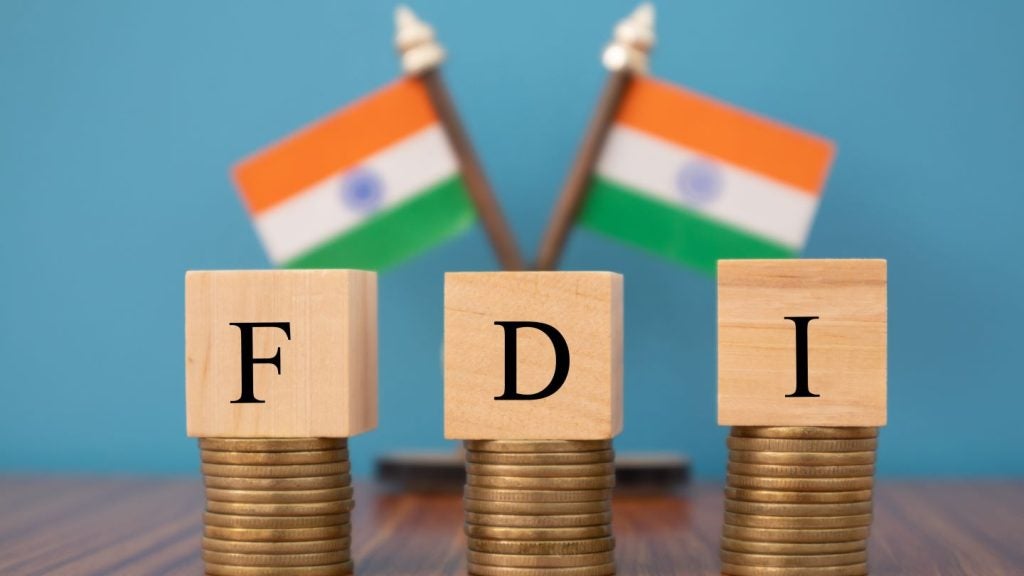regulations governing private health insurers, aimed at attracting
new entrants into a market dominated for five decades by a single
state-backed player. Reform comes after intense pressure for change
that culminated in the largest independent insurer exiting the
market in 2007
Providing affordable health cover, be it private or
state-funded, is a global challenge and one Ireland has tackled
using a hybrid approach that is based on what the Irish government
terms intergenerational solidarity – effectively, equality of
service for all – that integrates state health service provision
and private health insurance (PHI).

Access deeper industry intelligence
Experience unmatched clarity with a single platform that combines unique data, AI, and human expertise.
The approach has many commendable aspects but after more than half
a century since its introduction, flaws are evident, particularly
in the realm of facilitating robust competition in Ireland’s PHI
market.
Ireland’s approach to healthcare limits totally free provision and
would thus in itself appear to be the ideal environment in which
private health insurers should thrive. At present, the state
provides access to health services including public hospitals,
medical professionals and pharmaceutical services free of charge to
permanent residents over 70 years old and those earning below
certain low income thresholds. For example, for a single person
living alone the maximum income threshold is €9,568 ($14,000) per
year, according to the Irish government’s Citizens Information
Board. About one-third of the population enjoys totally free
medical services.
High level of private plan enrolment
The remainder of Ireland’s population is entitled to public
hospital services on payment of a small fee, but must pay privately
for general practitioner, dental and pharmaceutical services. Not
surprisingly, Ireland has one of the highest levels of enrolment in
PHI plans in the world – about 52 percent of the population of
about 4 million, according to consultancy Watson Wyatt.

US Tariffs are shifting - will you react or anticipate?
Don’t let policy changes catch you off guard. Stay proactive with real-time data and expert analysis.
By GlobalDataIreland’s first PHI dates back to 1957 when the Irish government
launched the Voluntary Health Insurance Board (VHI), a non-profit
provider of health insurance to high-income earners (then about 15
percent of the population) who were not entitled to free public
healthcare. A quasi-state-owned enterprise with a board of
directors appointed by the Minister for Health and Children (MHC),
VHI functioned for four decades as a monopoly. VHI is also subject
to derogation of certain regulations including compliance with
solvency requirements.
However, things began to change when in 1992 the European Union
issued a directive specifically intended to promote competition in
the insurance industry. The Irish government responded by passing
the Health Insurance Act in 1994, effectively opening the PHI
market to competition. In 1997 competition came for the first time
when UK private health insurer BUPA established BUPA Ireland.
A third private health insurer, Vivas Health, began operations in
October 2004. Further competition was added in February 2007 when
Vivas and Ireland’s largest composite insurer, Hiberian, entered
into an alliance to market the Hibernian Health Insurance Plan, a
product developed by Vivas. Hiberian is a wholly owned unit of UK
insurer Aviva.
At the end of 2006, VHI had about 1.55 million members and BUPA
Ireland about 475,000 members – in total, about 90 percent of all
private health insurance members. The balance was shared by Vivas
(about a 3 percent market share) and restricted membership
undertakings such as the police and prisons services.
Heavily regulated
Regulated by the Health Insurance Authority (HIA), Ireland’s
private health insurers are subject to an onerous set of
regulations incorporated in the Health Insurance Act. These
regulations form the core of the country’s intergenerational
solidarity approach to PHI and cover five specific concepts:
- Open enrolment: health insurance companies
must accept anyone under 65 who wishes to join, regardless of age,
sex or health status; - Lifetime cover: contracts cannot be renounced
by the insurer; - Community rating: insurers must charge the
same rate for a given level of service, regardless of age, sex or
health status. Thus all adults pay the same amount for the same
benefits; - Minimum benefits: insurers must provide
benefits above a prescribed minimum level such as accommodation in
a semi-private ward in a public hospital; and - Risk equalisation: this aims to neutralise
differences in health insurers’ costs that arise due to variations
in their risk profiles and results in cash transfers from insurers
with healthier than average risk profiles to those with less
favourable risk profiles.
Contentious scheme
It is risk equalisation that has stirred the most controversy and
ultimately resulted in BUPA withdrawing from the PHI market.
One of the HIA’s duties is to submit reports and recommendations to
the MHC based on its analysis of the returns from insurers. When an
imbalance occurs in the market, the HIA can recommend the
triggering of payments to the risk equalisation fund. The market
risk differential is expressed as a percentage of the amount of
equalised benefits insurers would be liable to pay to the risk
equalisation fund in order to ensure that in total they have a risk
profile at, or approximate to, the market average experience.
Two specified parameters are set as measures of differentials in
the risk profiles of insurers – 2 percent and 10 percent. Risk
equalisation payments cannot be commenced when differentials are
below 2 percent, while above 10 percent the MHC has the power to
activate payments to the risk equalisation fund. Between the two
parameters, the HIA can recommend to the MHC that transfers
commence.
The risk equalisation payments scheme (RES) came into force in its
current form in January 2007 although a similar precursor was
introduced by legislation in 1994. New entrants are exempt from the
RES during their first 36 months of operation.
Irish health regulations, especially risk equalisation, have been
the source of heated conflict between the government and private
health insurers for many years. The first big test for Ireland’s
health regime came in 2003 when BUPA approached the European
Commission for a ruling on its validity in terms of EU competition
parameters.
BUPA’s effort proved futile. In its review, the EC expressed its
support for the Irish authorities’ contention that RES prevents new
entrants from targeting low-risk customers, leaving VHI with the
bad risks. The EC noted data suggested that this was indeed
happening and that “some insurers [it could then only have been
BUPA Ireland] have been trying to attract younger, and presumably
healthier subscribers, thereby following a policy of competition
based on risk selection rather than quality or efficiency”.
In its conclusion, the EC noted that the RES “is considered
necessary to maintain respect of the basic principles applicable in
the Irish private health insurance market, namely community rating,
open enrolment and lifetime cover”.
BUPA has not been alone in its efforts to expose what it and other
players believe to be an anti-competitive regulatory regime. In
2007 Vivas published a study on what it termed the “dysfunctional”
PHI market that it had commissioned Irish research company Goodbody
Economic Consultants to undertake. Commenting on the findings of
the study, its author, John Finnegan, noted: “Our review of the
market highlights some critical issues which are creating an
unsustainable market and stifling competition.”
Competition indicator
A key indicator of competition used by Finnegan was the
Herfindahl-Hirschman Index (HHI), a commonly accepted measure of
market concentration. The HHI is calculated by squaring the market
share of each company competing in a market, and then summing the
resulting numbers. The HHI number can range from close to zero –
indicating a highly competitive market – or to 10,000 if only one
company was monopolising a market. The Irish health insurance
market was assessed as having an HHI of over 7,000.
According to Vivas, the US Department of Justice considers a market
with an HHI of less than 1,000 to be competitive and an HHI of
1,000 to 1,800 to be a moderately concentrated. A market is
considered highly concentrated if its HHI is 1,800 or higher.
Finnegan conceded that there are other countries where community
rating and risk equalisation is or has been practised. However, he
emphasised that the situations in those countries differed
radically from that in Ireland and that there is no market that has
community rating and risk equalisation and so few
competitors.
He noted that in the US state of New York, risk equalisation is a
temporary measure when the future of an insurer is under threat. In
Australia, risk equalisation applies but in a market with 26
competitors he stressed that it cannot stifle competition. In
Switzerland, risk equalisation is temporary and is applied in a
market with 100 insurers. Other countries with risk equalisation
regimes in various forms include the Netherlands, Germany, Russia,
Finland and Israel.
However, demands for change fell on deaf ears until January 2007
when BUPA announced its exit from the Irish PHI market. For BUPA,
the final crunch came after the loss in December 2006 of a High
Court action in which it challenged the RES. In a statement issued
by BUPA Ireland in January 2007, it said the RES was costing it €1
million per week and that over the next three years it would pay
€161 million to VHI. This, it added, was an amount far in excess of
BUPA Ireland’s estimated surplus of €64 million over the next three
years and would make it impossible to remain solvent.
In February 2007 BUPA Ireland was acquired by Quinn Group, an
Irish company with units including Ireland’s second-largest general
insurer, Quinn Direct. But Quinn did not, as it had originally
anticipated, enjoy the 36-month exemption from the RES thanks to a
hastily passed legislation.
In dismay, Quinn Group chairman Sean Quinn said at the time:
“How can we be expected to run a business if government can change
legislation retrospectively, which changes this business from a
profitable activity to a loss-making one?”
Challenging the Irish government’s actions, Quinn offered to take
over VHI and all its members without the need for the RES. In 95
percent of cases Quinn would reduce VHI member contributions and
provide them with immediate cover, said Quinn. This offer was
rejected and Quinn subsequently announced that it would seek legal
recourse to challenge the removal of its 36-month exemption from
the RES.
But despite Quinn’s frustration, Watson Wyatt notes in a recent
overview of the Irish PHI market that BUPA’s exit from the market
did force the government to re-examine the PHI market. In March
2007 an expert group was established to produce a report referred
to as the Barrington report. In 2007 reports on competition in the
PHI were also published by Ireland’s Competition Authority (CA), a
statutory body, and the HIA.
In most key respects, the CA’s findings parallel those of the
Barrington report. Among them, the CA noted that given the
legislative and regulatory limitations imposed on private health
insurers to enforce intergenerational solidarity, the level of
competition PHI consumers are used to in other insurance markets is
impossible. The CA added that it was clear from the views of
potential market entrants that the single greatest barrier to entry
is VHI’s favoured position.
Reforms announced
In April 2007 the government responded to the reports with the
announcement by the Minister for Health and Children, Mary Harney,
of a range of reforms. The primary aim of the reforms, said Harney
at the time, were to create “a level playing field in the market”
and to make it easier for people to understand and select PHI plans
and to switch between insurers. She also noted that the government
has “an open mind” on VHI’s ownership.
Key reforms Harney announced included:
- VHI should become a conventional insurer authorised by the
Financial Regulator by the end of 2008. The derogation from
solvency requirements that VHI enjoys will cease when it is
authorised; - to encourage competition and new entrants, risk equalisation
payments will be discounted by 20 percent; - consideration of new regulations to encourage people to take
out health insurance at an early age by introducing loadings for
later entrants; and - the HIA will consult with the health insurance industry and PHI
providers on defining the level of health insurance that should be
subject to community rating.
In addition, Harney announced that the HIA would consider the
feasibility of amending the current retrospective RES to a
prospective RES in which risk premiums for each insurer’s portfolio
are estimated in advance.
In her statement, Harney stressed that the government was strongly
committed to facilitating increased competition in the health
insurance market. However, she added that the government was also
strongly committed to maintaining community rating as the basis on
which health insurance is offered to consumers.
As the cornerstone of any community rating system, RES appears set
to stay in place in Ireland. Notably, on the issue of RES Watson
Wyatt in a recent report pointed to the judgment delivered by the
High Court against BUPA Ireland in 2006. The court stressed: “This
market is potentially unstable without risk equalisation. The
scheme is therefore absolutely necessary given our system.
Moreover, it is fair, reasonable and proportionate.”







